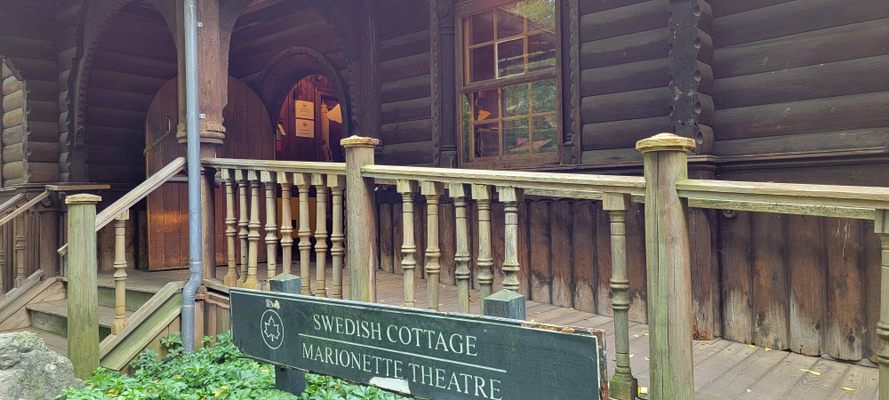About
The structure, a model for a prefabricated schoolhouse, was designed by prominent 19th-century architect Magnus Isæus in the Swedish National Romantic Style. The schoolhouse became Sweden's entry to the 1876 Centennial Exposition in Philadelphia, where it was seen by Frederick Law Olmsted, one of the designers of Central Park. Olmsted proposed that the picturesque building be relocated to the park and the City of New York purchased the schoolhouse in 1877 for $1,500.
It was reassembled in its current location, the only building in Central Park not original to the public open space. The structure served several functions over the next 70 years, including as a tool house, women's comfort station, entomology lab, and for civil defense during World War II.
In 1947, Mayor Fiorella La Guardia and parks commissioner Robert Moses repurposed the cottage as the headquarters and workshop of the parks department's puppeteers. The Department of Parks and Recreation had created its traveling marionette troupe eight years earlier. The group is the oldest continually operating company of its kind in the United States.
The building was rehabilitated in 1961 and 1973 and underwent a full modernization in the late-90s. The exterior received an historic restoration, mechanical systems were upgraded, and barrier-free access was constructed to and from the building.
The small theater built in 1973 was improved with a puppetry bridge, sound system, computerized stage lighting, and permanent seating in a traditional Swedish design. For the first time, in 1998, the marionette theater became the sole occupant and function of the Swedish Cottage.
Related Tags
Know Before You Go
Tickets must be purchased in advance online; there is no box office. The Swedish Cottage Marionette Theater is located within Central Park and therefore does not have a street address. Walking directions to the cottage are available on the theater's website.
Community Contributors
Added By
Published
August 24, 2022































